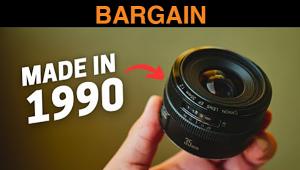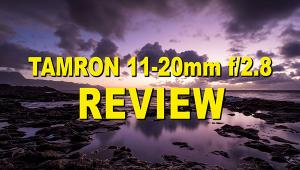Lensbaby Trio 28 Lens Review

Unless you’re completely new to photography, you’ve heard about Lensbaby, the marvelously creative series of lenses that are best described as intentionally unsharp and stuffed with almost every imaginable aberration and distortion. The Lensbaby Trio 28 is the latest model, and it has a secret.
Part of the attraction of the Lensbaby series—beyond the creative capabilities—is the modular construction that allows the user to swap out the components to change up the results. Lensbaby calls this Optic Swap. The Trio 28 goes this approach one better. It consists of three separate and distinct optics that are mounted on a rotating turret.
Remember what old fashioned professional movie cameras looked like with three lenses in front? The Lensbaby Trio 28 is very similar, only much flatter.

The optics are the Twist, Sweet and Velvet. Each has a full-sized counterpart in the Lensbaby lineup. For instance, the Velvet can be purchased as the Lensbaby 56mm f/1.6 Velvet in eight different lens mounts that cover all of the bases. To change from the Twist to the Sweet requires just a quick rotation of the front portion of the lens. (Reminds me of what the eye doctor does during my annual exam. “Which looks better, one…or two?”)
The Lensbaby Trio 28 is available in three mirrorless camera mounts: Micro Four Thirds (the version I tested), Fujifilm X and Sony E. Focus is manual and the aperture is fixed at f/3.5. The unchangeable f/stop is a bit disappointing because one of the beautiful things about a Lensbaby is watching the flare and aberrations nearly disappear when the lens is stopped down. To be honest, though, I usually use them wide open anyway.
The focal length is 28mm which doubles when used on a Micro Four Thirds camera; so the film-camera equivalent is 56mm, a very useful focal length.
The first Lensbaby appeared in 2004 if I recall correctly. For me it was love at first sight.
About one hundred years ago when I worked at Altman Camera in Chicago, one of our resident experts (and I’m using that label in all sincerity) discovered that if you disassembled a set of Nikon manual extension tubes and screwed in a Vivitar +10 Macro Adapter you had a fixed-focus soft focus lens. This Rube Goldberg contraption has its limitations, but it exhibited all of the great and glorious imperfections that Lensbaby delivers today.

I’ve been using genuine Lensbaby lenses in Pentax and Nikon mounts—a lot—on my Micro Four Thirds cameras via a Fotodiox adapter. Lensbabies are 100% manual—focus and aperture can only be set manually—so nothing is lost in the translation. In other words, my Lensbaby that’s in a Pentax mount performs the same way on my Panasonic Lumix G3 that it does on any of my Pentax bodies.
Because high resolution is not required when using a Lensbaby, I’ve extended the life of some otherwise outdated DSLRs. My old Nikon D70s, my venerable Pentax K20D and my vintage 2002 Canon D60 are no longer suitable for everyday work, but they’re perfect with Lensbabies attached. And that’s how they sit on my shelf, all Lenbabied up, ready to go.

Performance
The Lensbaby Trio 28 performs as described. It’s great to be able to select from three different creative effect optics without physically removing and replacing the lens. At the very beginning I did have a bit of trouble telling the difference from one shot to the next. Then it dawned on me that in order to fairly compare the differences in the lenses, the subject had to be constant.
I also realized that if I always kept the Twist optic in shooting position, I’d never have to struggle to figure out which one was in place. If you start with the Twist, rotate to the left for the Sweet optic and to the right for the Velvet. That way it’s easier to change effects while keeping the camera at eyelevel.
Conclusion
If you’re a regular Lensbaby user, you’ll appreciate getting three optics for the price of one. But that’s only part of the reason to buy one. The three optics give you greater creative flexibility all wrapped up in one lens.
—Jon Sienkiewicz
- Log in or register to post comments

















































